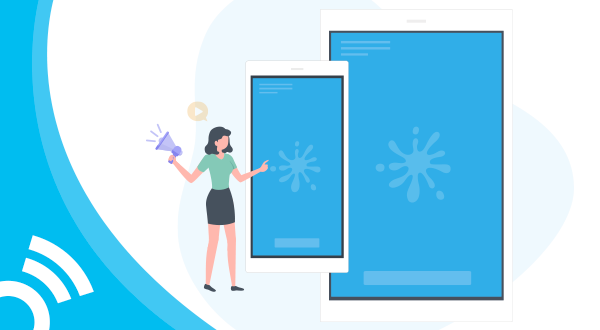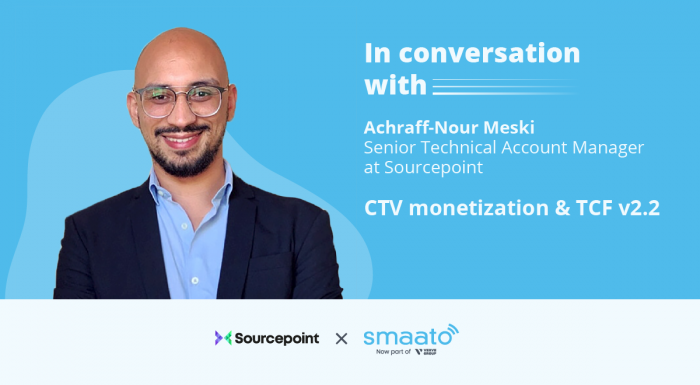One of the golden rules in marketing is to know your audience. Ask any marketer in 2023, and you’ll probably hear that knowing your audience isn’t enough. One essential tool in the programmatic advertising toolbox is audience targeting. What’s the difference between a target audience and audience targeting? How should brands use audience targeting in campaigns on different channels? And why should consumers and publishers care about all of this? Read on for everything you need to know about audience targeting in 2023.
What is audience targeting?
Audience targeting might sound the same as a “target audience,” but the two terms aren’t quite interchangeable. Generally speaking, target audiences are simply the people a brand wants as customers. On the other hand, audience targeting is a strategy that segments all possible users into themed buckets for marketers to target with relevant ads. You’ll sometimes hear “target audience” used to refer to the group of consumers in these buckets.
There are many ways to slice and dice audiences, but below are some of the most useful characteristics for defining an audience for targeting. Whether or not these attributes are “targetable” depends on how much data is available about the pool of consumers.
- Demographics. Targetable demographic attributes include age, gender, income, marital or parental status, and level of education.
- Location. Marketers and publishers can use place-related data to define audiences based on their “home base” or places they visit. For example, if a device pings in a residential neighborhood 8 pm – 7 am every day, this location is probably that user’s home. If the user visits a coffee chain, they could go into an audience of coffee drinkers.
- Time. When and how much a consumer uses their devices can provide useful information for audience targeting, even if other details aren’t available. For example, here at Smaato we’ve created two time-based categories for audience targeting: Early Risers and Night Owls. We can make a good guess that our Night Owls won’t be interested in early-morning Pilates classes.
- Device Attribute. Targeting by device attribute is more granular than just targeting by device type. Let’s say our data includes the year of a user’s phone model. If we see they’re using an iPhone 7 from 2016, they can go into a category of people who might be interested in upgrading to a newer phone. This is more useful than targeting on iPhone vs. Android or Mac vs. PC.
Benefits of audience targeting for consumers, advertisers, and publishers
Now that we’ve defined audience targeting, let’s explore what it means for consumers, advertisers, and publishers. Whether you’re a marketing campaign manager, ecommerce fanatic, or monetization manager, this programmatic advertising strategy has benefits for you.
Consumers
If a tree falls in a forest, but nobody hears it, did it really even fall? Indulge us a little by going along with this cliche: the tree is an ad and the forest is all the possible ad inventory. Audience targeting ensures that consumers are taking a nice stroll in the forest, setting the stage for the right person to hear the tree fall. For consumers walking in these metaphorical woods, audience targeting offers several benefits, including:
- Improved user experience. Ads that are relevant to a consumer result in a better overall content experience. For example, seeing an ad for anti-virus software on an article about cyber-security is a better experience than getting an ad for a show at a nightclub.
- Better personalization, more relevant messaging. Tailoring ads to an individual consumer can be a big part of what it means to serve “relevant” ads. We know that users appreciate and engage with personalized content. A 2023 study found that 56% of consumers are more likely to become repeat customers after a personalized experience, a 7% increase since 2022.1 Audience targeting can be a powerful complement to dynamic, personalized content. Retargeted ads meet the consumer where they are in the customer journey.
1 State of Personalization Report 2023, Twilio
Advertisers
Marketers constantly face the challenge of stretching ad budgets as far as possible. They’re expected to spend less, hit incredible performance metrics, and measure every inch of the customer journey. Audience targeting can help ease all these pain points by increasing efficiency of ad spend and delivering relevant messaging to the right viewers and users
- Cost-effectiveness. Targeting the right audiences helps marketers ensure their ads only reach users that are really interested in purchasing their products/services. This minimizes wasted exposures and uses ad budgets more effectively. From a campaign performance perspective, marketers can expect lower CPMs (cost per 1,000 impressions) and higher ROAS (return on ad spend).
- Resource allocation and optimization. Insights from audience targeting help campaign managers understand which audiences engage with the ads (and hopefully convert). Marketers can use this information to optimize their campaign creative and allocate budget toward audiences that are more likely to convert and drive revenue.
- Brand affinity and customer loyalty. Highly relevant ads build brand affinity and fosters loyalty. In fact, 65% of consumers say personalization helped earn their loyalty in 2023.2 Use audience targeting to reach existing customers with remarketing and encourage them to re-engage with your brand’s content, products, or services.
2 Personalisation earns loyalty in 2023, MarketingTech News
Publishers
Did you know that audience targeting also benefits publishers? It’s true: audience targeting is a win-win-win for consumers, marketers, and publishers.
- Better fill rates. Well-defined target audiences help align supply and demand partners. It’s easier for real-time bidding (RTB) programmatic technology to place relevant creative in the right inventory slot.
- Higher eCPMs. More relevant content means better engagement, including higher view-through rates (VTR). Strong engagement metrics build credibility for publishers, helping to demonstrate high-quality inventory. Put all this together, and you get a case for setting a higher price floor, ultimately leading to better eCPMs (earnings per 1,000 impressions) and revenue for publishers.
Trends to watch in audience targeting (2023)
Like everything in the advertising world, audience targeting is always evolving. In 2023, the top trends to watch include:
- Personalization: Consumer preferences can be fickle. Just because consumers currently appreciate personalized ads now doesn’t mean this preference is a given.
- Data privacy and identity: Established and emerging legislation around personal data and privacy, combined with ATT and the death of cookies, mean the search is on for alternative identifiers to use in audience targeting.
- SKAdNetwork 4.0 has offered improvements to privacy-compliant measurement and attribution on mobile. Apple recently teased that SKAN 5.0 will roll out in late 2023.
- Advances in audience targeting on connected TV (CTV).
How to take advantage of audience targeting
Feeling inspired to get started? At Smaato, we’re excited to now offer enhanced audience targeting with our Verve Behavioral Audiences solution, as well as proprietary geosegmentation. And, we’re continuing to roll out enhancements to our audience targeting capabilities, including contextual targeting through Moments.AI™ as well as third party integrations. As always, we’re here to help! You can get in touch with the Smaato team anytime.




